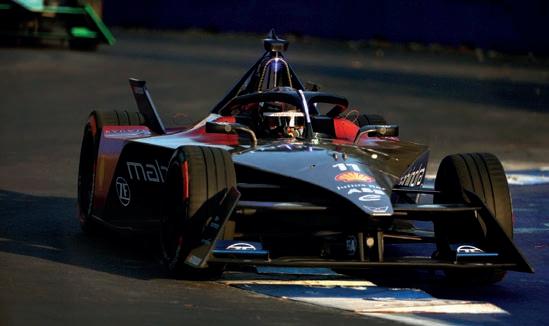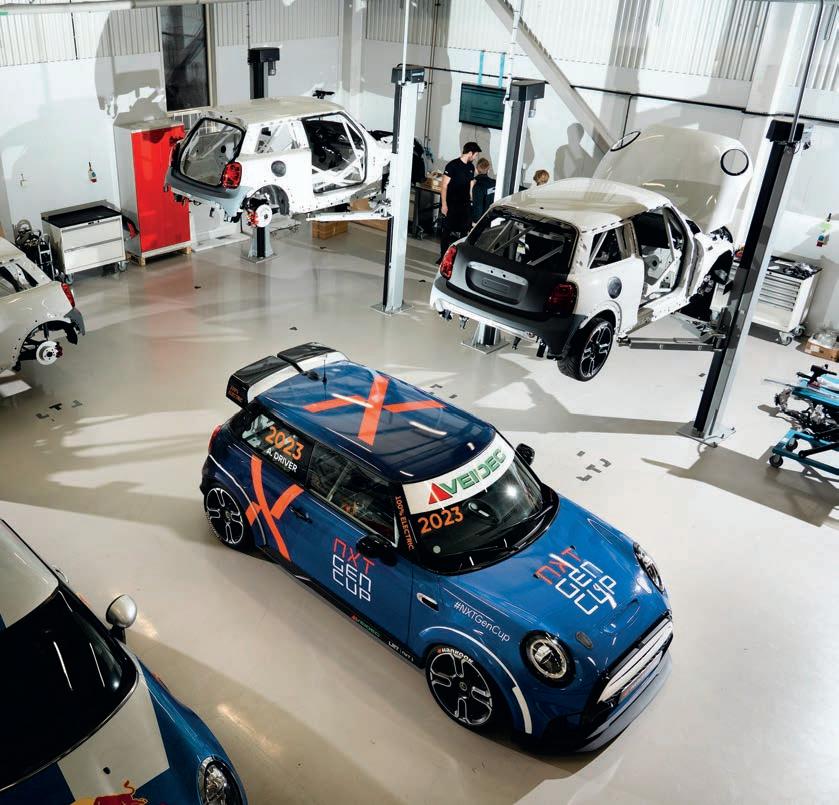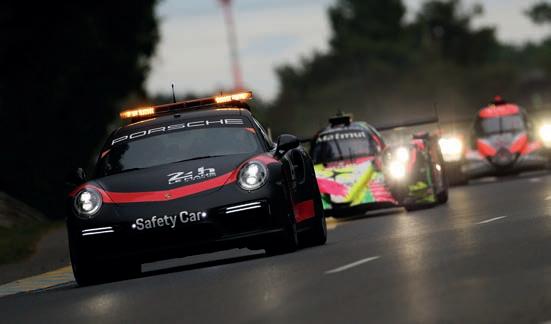
3 minute read
Optimal evolution
As the 2023 season gets underway, Racecar spoke to Tetsushi Kakuda, F1 project leader at Honda Racing Corporation, to nd out how the team approached the development of the 2022 Red Bull Powertrain power unit
By STEWART MITCHELL
The Red Bull RB18, which won the 2022 F1 Constructors’ and Drivers’ Championships, was powered to its dominant success by a Red Bull Powertrains (RBPT) RBPTH001. This power unit is a derivative of the Honda RA621H, used by the Japanese manufacturer during the 2021 F1 World Championship campaign.
Red Bull Powertrains was created in 2021 to supply power units to Oracle Red Bull Racing and Scuderia AlphaTauri for the 2022 F1 season and beyond, after Honda announced it would exit F1 at the end of the 2021 season. Although Honda’s participation in F1 was officially over, the 2022 Oracle Red Bull Racing and Scuderia AlphaTauri power units were Honda-produced, assembled, maintained, and trackside supported, despite their RBPT designation.
Between 2021 and 2022, there were significant FIA-implemented development restrictions in place for the power unit manufacturers, limiting the spec changes for the 2022 season ahead of an internal combustion engine (ICE), MGU-H, turbocharger, fuel and oil freeze from 1 March 2022, and the MGU-K, energy store and control electronics freeze from 1 September.
After these dates, power unit specifications were frozen until the end of the 2025 season, before a new power unit era starts in 2026.
Detail in design
Despite the limited development scope, Honda engineers in Japan were busy making detailed but essential design changes to the RA621H to produce its successor’s specifications. Without Honda’s commitment, Red Bull would have started the new era at a significant disadvantage, as the other manufacturers developed their power units before those freeze dates.
Honda developed the 2022 RBPTH001 power unit at its research and development centre in Sakura City, Tochigi prefecture, run by Honda’s racing subsidiary, HRC (Honda Racing Corporation). In charge of the development there is Tetsushi Kakuda, executive chief engineer, automobile racing development division and F1 project leader.
The E10 issue
The most significant development area for the 2022 Formula 1 power unit specification was around the new fuel introduced for 2022, which includes 10 per cent ethanol, up from the previous 5.75 per cent bio-content.
There are pros and cons to running any engine on E10. The construction of the ethanol molecule means it carries a lower quantity of joules per kilogram as a combustible vapour compared to the equivalent volume of petrol, making the combustion process less potent. However, engineers can adjust several elements of the engine configuration, as well as running parameters, to exploit some beneficial characteristics of the higher ethanol content. For example, compression ratio, if permissible by regulation, can increase and drive combustion efficiency higher.
Honda tested several E10 formulations proposed by its fuel partner, ExxonMobil, before choosing the one with the most desirable characteristics.
‘Because E10 has very different characteristics from the previous fuel generation, we had to develop the combustion-related elements to work with that,’ Kakuda explains. ‘The calorific value of E10 is lower than the previous fuel, which would reduce engine output if we could not address it. We adjusted the ignition timing for the 2022 engine compared to 2021, and peak cylinder pressure is higher in the 2022 engine.’
There was no change to the pre-chamber ignition systems coinciding with the fuel evolution, though the MGU-H ERS was tuned to the E10 exhaust gas entropy.
Honda and ExxonMobil conducted detailed investigations into the fuel and lubricant interaction with combustion chamber geometry. Not all the fuel injected into the combustion chamber burns to generate power, thanks to crevice losses around the pre-chamber ignition, valve seats and piston top land. Formula 1 engines typically have low crevice volumes, but still roughly two per cent of the injected fuel escapes combustion by residing in them.
Top secret
Kakuda would not be drawn to expose the details of the changes, calling them ‘top secret’. However, he does admit that
‘we explored many different paths in the development of this area and tried many different configurations. We have also developed very accurate simulations to prove our concepts before implementing them into a mechanical system.’
The RBPTH001 takes advantage of a significant amount of additive manufactured (AM) parts. Kakuda emphasises the fact that additive manufacturing allows engineers to create components with structure only where load transfers through the part, which is obviously efficient.
‘Additive manufacturing has allowed us to optimise many components, including pistons and the turbocharger housing,’ he says. ‘Although Formula 1 has many restrictions on the materials teams are allowed to use, we have tried many different materials and combinations that fit within the regulations to give us the performance we want for our additive manufactured components.’
Honda also adjusted the crankshaft and cylinder block geometry to ensure reliability with the new E10 combustion conditions, while a specialised cylinder liner coating was applied at Honda’s Kumamoto factory.
‘We developed the whole combustion loop to exploit E10 in the most profitable way, including the injection system, exhaust system and turbocharger compressor and turbine efficiencies,’ Kakuda notes. ‘The RBPTH001 power unit weighed more than the RA621H [2021 version] thanks to beefedup components to aid reliability, but the dimensions are almost identical in terms of the outside shape and volume.










